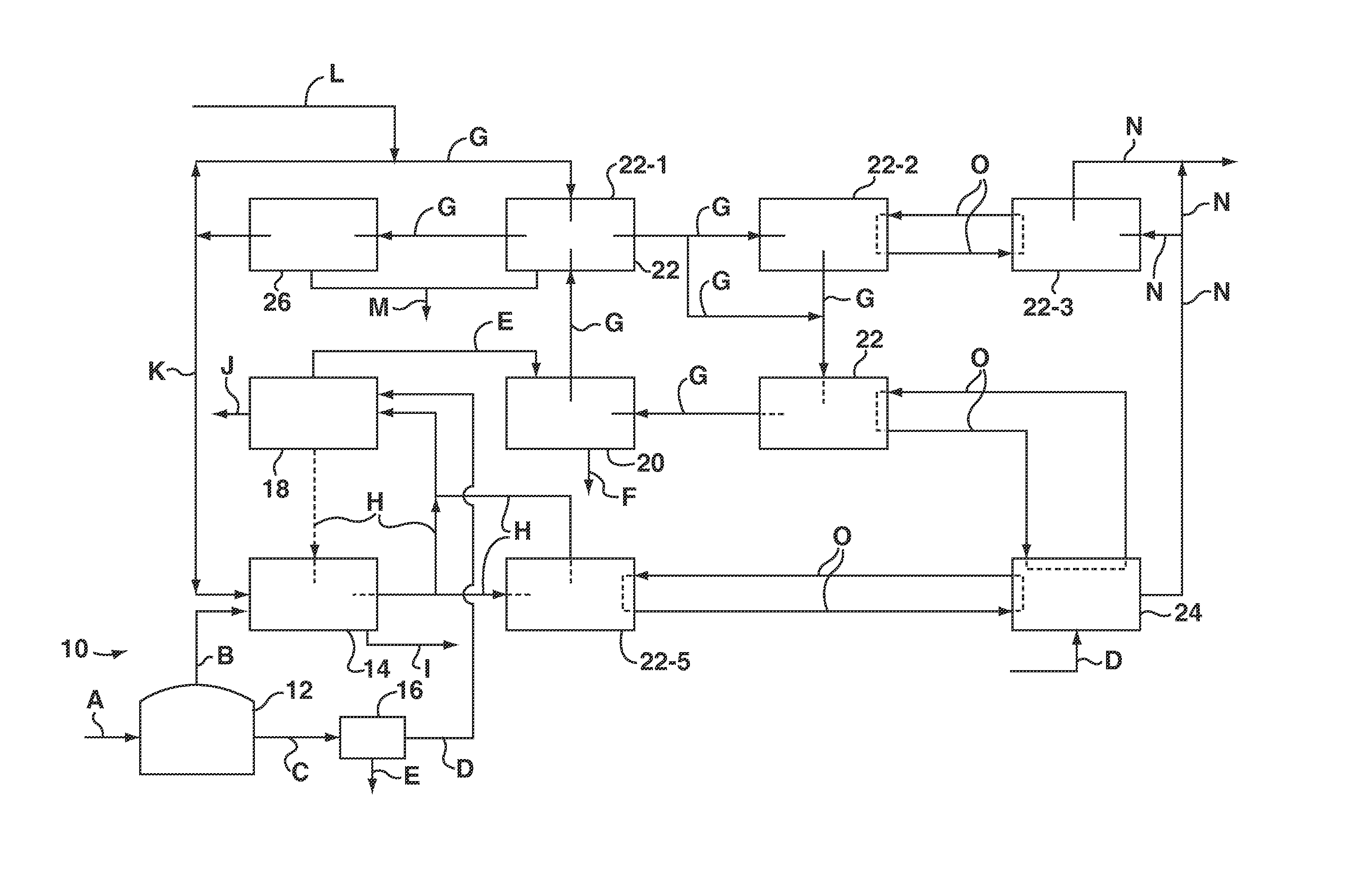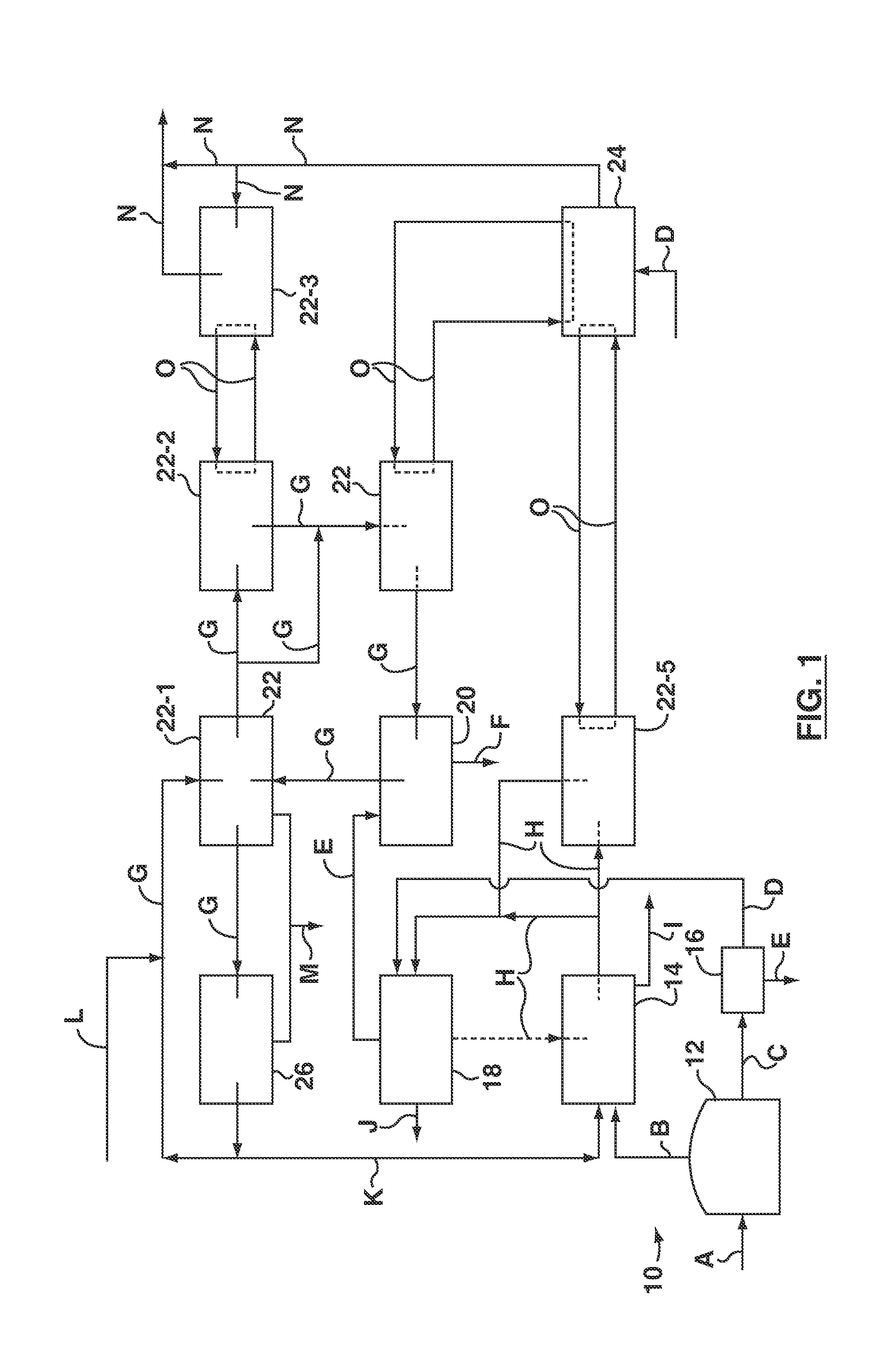Spray dryer exhaust treatment and anaerobic digester
a technology of anaerobic digestion and spray dryer, which is applied in the direction of biochemistry equipment and processes, lighting and heating equipment, biochemistry apparatus, etc., can solve the problems of high cost of exhaust gas treatment, high cost of process, and high cost of process. large amount of natural gas
- Summary
- Abstract
- Description
- Claims
- Application Information
AI Technical Summary
Benefits of technology
Problems solved by technology
Method used
Image
Examples
Embodiment Construction
[0011]FIG. 1 shows an anaerobic digester 10. The anaerobic digester 10 has, among other things, a reactor 12, a biogas burner 14, an optional solid-liquid separation unit 16, an optional evaporator 18 and a spray dryer 20. The reactor 12 may have one or more covered tanks with mixers. Though not shown, the reactor 12 may also have a feed storage and conveying system, internal mixers, a heater, a service box, a digestate recirculation loop, or other known equipment used with anaerobic digesters. The biogas burner 14 may be a combined heat and power (CHP) unit. A CHP unit may be a reciprocating or turbine engine capable of burning methane and turning a generator to produce electricity, or a boiler producing steam that is used to turn a generator. The solid-liquid separation unit 16 may be, for example, a screw press or belt press. A screening surface in the solid-liquid separation unit may have an opening size of at least 500 microns. The evaporator 18 may be, for example, a self-clea...
PUM
 Login to View More
Login to View More Abstract
Description
Claims
Application Information
 Login to View More
Login to View More - R&D
- Intellectual Property
- Life Sciences
- Materials
- Tech Scout
- Unparalleled Data Quality
- Higher Quality Content
- 60% Fewer Hallucinations
Browse by: Latest US Patents, China's latest patents, Technical Efficacy Thesaurus, Application Domain, Technology Topic, Popular Technical Reports.
© 2025 PatSnap. All rights reserved.Legal|Privacy policy|Modern Slavery Act Transparency Statement|Sitemap|About US| Contact US: help@patsnap.com


